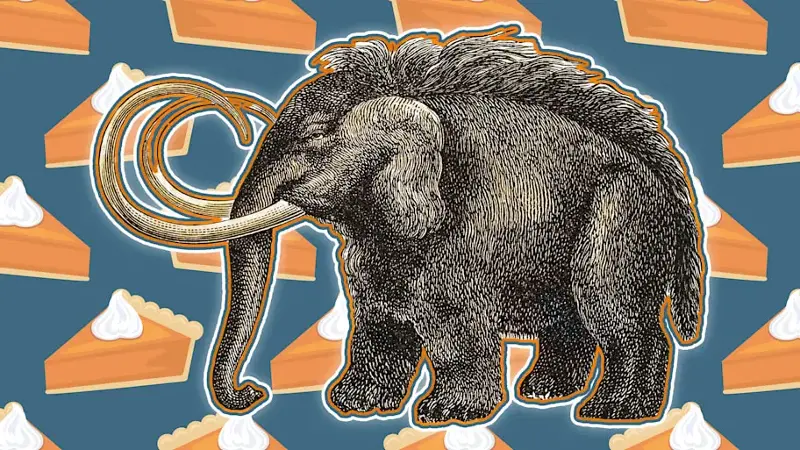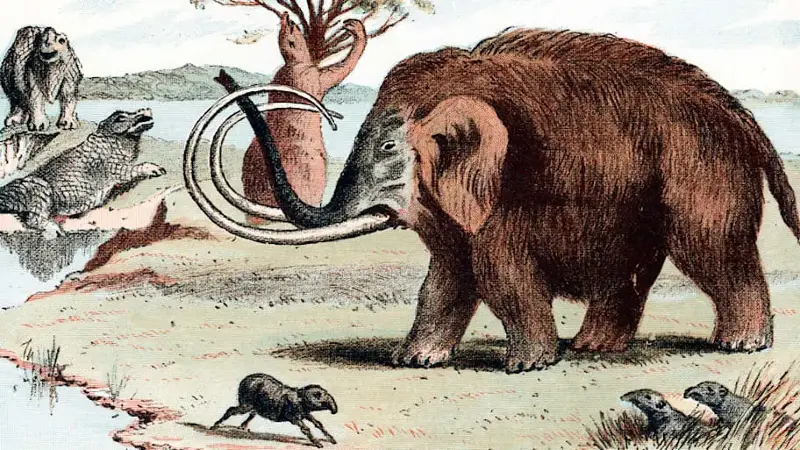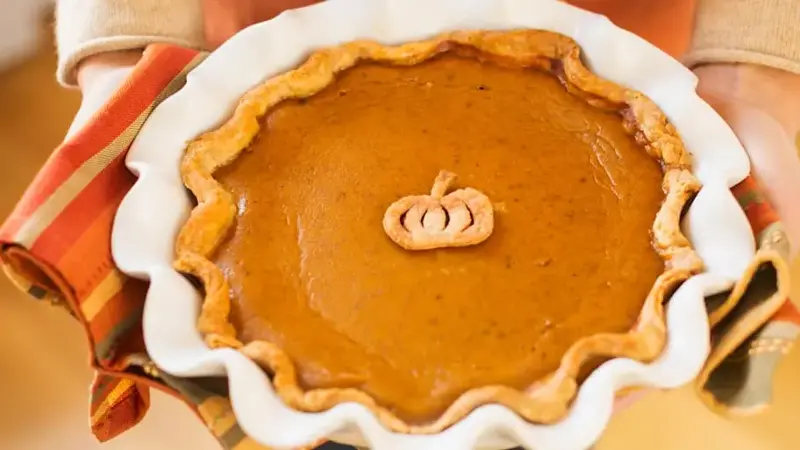
When it’s time to express gratitude for the many privileges bestowed upon your family this Thanksgiving, don’t forget to be grateful for mammoth poop. The excrement of this long-extinct species is a big reason why holiday desserts taste so good.
Why? Because, as Smithsonian Insider reported in 2015, tens of thousands of years ago, mammoths, elephants, and mastodons had an affinity for wild gourds, the ancestors of squashes and pumpkin.
The Power of Mammoth Poop
In a 2015 study published in the Proceedings of the National Academy of Sciences, a Smithsonian researcher and colleagues found that wild gourds—which were much smaller than our modern-day butternuts—carried a bitter-tasting toxin in their flesh that acted as a deterrent to some animals. While small rodents would avoid eating the gourds, the huge mammals would not. Their taste buds wouldn’t pick up the bitter flavor and the toxin had no effect on them.

Mammoths would eat the gourds and pass the indigestible seeds out in their feces. The seeds would then be plopped into whatever habitat range the mammoth was roaming in, complete with fertilizer.
When the mammoths went extinct as recently as 4000 years ago, the gourds faced the same fate—until humans began to domesticate the plants, allowing for the rise of pumpkins. But had it not been for the dispersal of the seeds via mammoth crap, the gourd might not have survived long enough to arrive at our dinner tables.
From Mammoth Poop to Thanksgiving Dessert
People certainly weren’t thinking of mammoths when they first began adding pumpkin pie to their Thanksgiving menus. And though pumpkins may have been part of the first Thanksgiving, pumpkin pie was nowhere to be found.
You May Also Like ...
- 10 Facts About Your Favorite Thanksgiving Foods
- 11 Thanksgiving Dishes the Pilgrims Didn't Eat
- 10 Olde-Timey Thanksgiving Recipes We Should Bring Back
Add Mental Floss as a preferred news source!
Pumpkin pie did exist in Europe in the 17th century—but it didn’t gain prominence on the other side of the pond until the late 18th century, when Amelia Simmons published “pompkin” recipes in American Cookery. Sarah Josepha Hale—a.k.a the “Mother of Thanksgiving”—further boosted the dessert’s popularity stateside when she described it as part of a Thanksgiving feast in 19th-century novel Northwood.
Does Pumpkin Pie Actually Contain Pumpkin?
That all depends on how you make it. There are recipes that call for using actual pumpkins as part of the dessert—those who wish to do so should make sure to select the right gourd for the job (hint: you probably want a sugar pumpkin).

But if, like most home cooks, you’re opting to use canned pumpkin for your pie, then we have some bad news: canned pumpkin doesn’t contain pumpkin. Instead, the orange puree is really a mashup of several different squashes. That doesn’t mean you can’t still impress your dinner guests with the tale of mammoth poop and pumpkins, though.
A version of this story originally ran in 2019; it has been updated for 2025.
